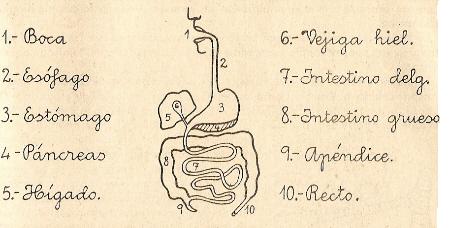Human gastrointestinal tract |

1. The Human gastrointestinal tract
In the picture, we see a family eating. To make the functions, the body needs food to get strength. Through the food that we eat, the human gastrointestinal tract gains sufficient energy to move and interact.
Through digestion, food is transformed into a milky substance that can be absorbed by the blood.

2. Parts of the human gastrointestinal tract
The human gastrointestinal tract is a set of organs that are involved with the digestive function. In the picture above, we can distinguish:
- The mouth, with incisors, canines and molars. It also contains the saliva.
- The esophagus that is a muscular tube between the mouth and stomach.
- The stomach is a hollow of coarse walls.
- The pancreas produces gastric acids.
- The liver produces fluid called bile, which is stored in the gallbladder.
- The small intestine is a long tube about 7 meters long.
- The large intestine extends from the ileum to the anus. It is about 1 meter long and it has a blind-ended tube called appendix.
- The rectum is the tube that connects the large intestine and the outside of the body through the anus.